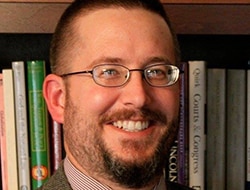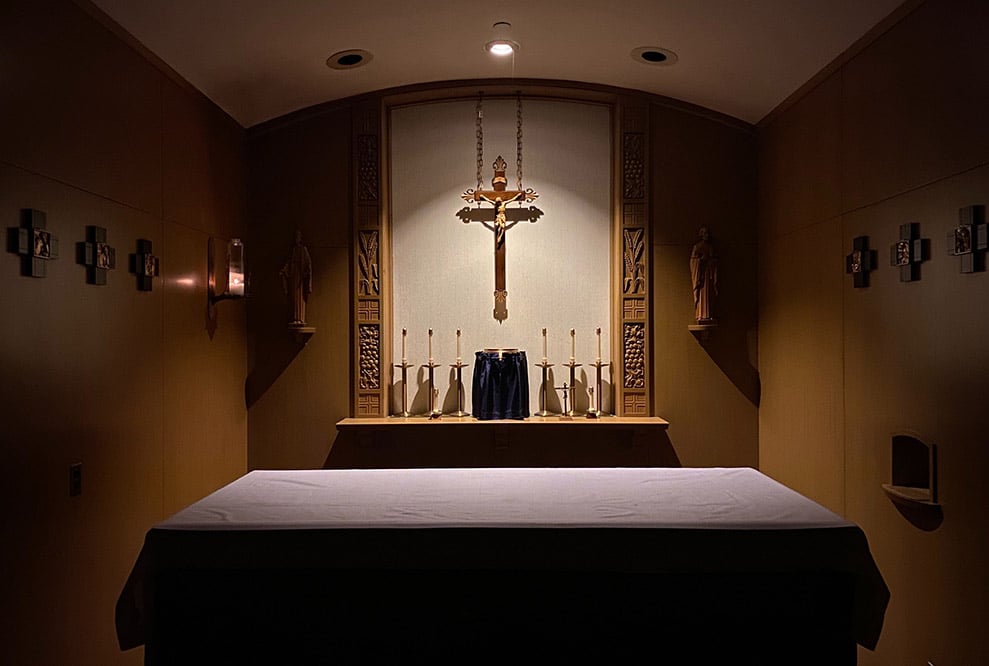 “From the Chapel” is a series of short, daily reflections on life and faith in a time of uncertainty. As people across the world cope with the effects of the coronavirus — including the social isolation necessary to combat its spread — these reflections remind us of the hope that lies at the heart of the Gospel.
“From the Chapel” is a series of short, daily reflections on life and faith in a time of uncertainty. As people across the world cope with the effects of the coronavirus — including the social isolation necessary to combat its spread — these reflections remind us of the hope that lies at the heart of the Gospel.
In a world in which dispelling darkness is as simple as flipping a switch, many of us have lost sight (no pun intended) of how often light is used as a metaphor for our Catholic faith. We catch a glimpse of it during the ceremony of the new fire at the beginning of the Easter Vigil, and the elevation of the Easter candle by the priest as he intones Lumen Christi (“Christ, our light”), and we reply Deo gratias (“Thanks be to God”).
But until the advent of electric light, it meant something visceral to Christians to say that Christ is our light, the God who became man in the dead of winter to dispel the darkness of the world, and who rose radiant from a pitch-black tomb at dawn on Easter morning. Throughout most of the time that man has walked the earth, night was dark in a way that it no longer is for most of us, and for four or five months of the year, it was long and cold, too.
|
Want more coverage on coronavirus from a perspective of faith? Sign up for our daily newsletter.
|
Light, heat, warmth — even the pagans saw these as gifts from the gods, and Christians saw them from the beginning as properties (at least by analogy) of the one true God.
In the OSV chapel today, I turned the electric spotlight on the crucifix off, so that the space was lit only by the sanctuary candle. For a moment, the chapel seemed forbiddingly dark. Then the light rose from the flickering flame, and the outline of the tabernacle and the crucifix came into view. As I sat there in silence in the presence of Our Lord, everything became increasingly illuminated.
Our world is dark, and not just in these days of a global pandemic. Christ himself tells us in John 12:31 that the prince of darkness is the ruler of the world. But that darkness is masked — not dispelled, but hidden — by all the false lights around us. As we become less aware of evil that surrounds us — indeed, as we see it bathed in false light and begin to think it good — the one true light too often fades in our vision.
Just as the electric spotlight here in the chapel kept me from seeing how bright the sanctuary candle actually is, the false lights that hide the darkness of the world can make Christ seem like only one light among many, and not even the most bright. But just as turning off the light in the chapel let the flickering flame of the candle shine more brightly, our Lenten discipline helps us to shut out the false lights of the world so that we can more fully embrace the Light of Life.
Scott P. Richert is publisher for OSV.




